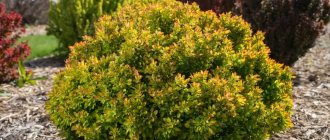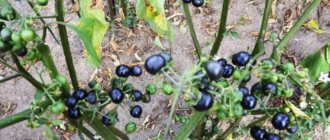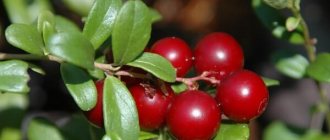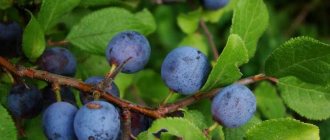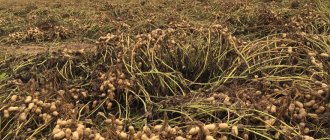General information
This vegetable has many names, including gumbo, okra and lady's fingers.
If you hear this name, it means we are talking about okra - a rather valuable vegetable crop that belongs to the Malvaceae family. Nothing is known about the homeland of this plant, but it is widespread in Africa, North America, India and the tropics. Some call its homeland West Africa, others - India. This is due to the fact that a wide variety of varieties and types of okra grow in these places. The vegetable is found in Europe, but the Arabs brought it there. It is grown in Russia and Ukraine. This became possible after the onset of noticeable warming. The number of enthusiasts growing it is very small. Okra is an annual herbaceous plant. It can grow up to 40 cm in height, but there are cases when the vegetable reached two meters. Okra has a very thick and branched stem. The leaves are drooping and light green. They are very large and seven-lobed, although there are also five. The flowers are quite large and yellowish-cream in color. They are located on stalks in the axils of the leaves. This is where the fruits are formed. Popularly, okra fruits are called capsules, due to the fact that they have a 4-8 sided shape, with seeds inside.
Okra, like eggplants, is very demanding of heat. In this regard, its cultivation is carried out in the southern regions. But it was like that before, now the situation has changed a little. Skilled gardeners successfully grow it in colder countries.
The vegetable can increasingly be seen on store shelves not only frozen, but also fresh. Recently, okra can also be found in the market. This plant is harvested from August to November.
How to choose
When choosing okra, special attention should be paid to its appearance. The pods should be 10 cm, this is the maximum length. You should buy shorter fruits. They should be bright green without any damage, moldy spots or dry areas. Buy only young and tender fruits, which should be firm to the touch. Sometimes there are varieties with a darker, even slightly reddish color. It is very easy to identify an overripe fruit by its leathery shell. Such a vegetable is very hard and fibrous and is completely unsuitable for cooking; it only spoils it.
How to store
Okra is a highly perishable product. It can only be stored for three days. If you are going to store the vegetable in the refrigerator, first wrap it in newspaper or a paper bag.
In culture
It is known that the well-known writer Anton Pavlovich Chekhov was involved in the cultivation of okra. At the beginning of the last century, he diligently cultivated vegetables on his plot.
Calorie content of okra
A dietary low-calorie product, 100 g of which contains only 31 kcal, so people who care about their weight can eat it without harming their figure.
Nutritional value per 100 grams:
| Proteins, g | Fats, gr | Carbohydrates, g | Ash, gr | Water, g | Calorie content, kcal |
| 2 | 0,1 | 3,8 | 0,7 | 90,1 | 31 |
Video on our channel How to increase hemoglobin. Anemia, signs and symptoms of low hemoglobin.
Look
Origin of the plant
On the territory of modern Russia, okra or okra appeared relatively recently and now dishes containing this product are only gaining popularity. However, it is known that the classic of Russian literature Anton Chekhov was involved in the cultivation of the vegetable at the beginning of the 20th century.
Initially, the plant’s homeland is considered to be heat-loving regions:
- Africa;
- Ethiopia;
- India.
The exotic plant was brought to the United States by French colonists in the early 1700s.
Mentions of okra are found in fiction and cinema. Writer Harry Harrison introduced it as the crew's last food item in one of his novels. Okra is also rated in the box office hit film Interstellar.
What does it look like
Heat-loving okra reaches about 50 cm in height. The stem of the plant is branched and large. The leaves are large and drooping. Fruit boxes are formed in their axil and have a 4-8-sided shape
The boxes are covered with a fleecy layer that is slightly prickly to the touch. Inside they are seeds of various shapes:
- lumpy;
- rounded;
- oval.
During the flowering period, the plant is covered with beautiful yellow flowers.
Okra has dozens of varieties, which are differentiated by ripening time, size and shape of the fruit. The most commonly grown varieties in Russia are: “Green Velvet”, “White Velvet”, “Dwarf Greens”, “Juno”, “White Cylindrical”, “Lady Fingers”.
How to Grow Okra from Seeds
The seeds of the exotic vegetable germinate slowly, but this process can be accelerated by pre-soaking them. To do this, the grains are wrapped in gauze or cotton cloth and moistened with water at room temperature for a day.
We plant the swollen seeds in holes no more than 2-3 cm deep. Taking into account the characteristics of the root system, we leave a distance of up to 40 cm between the holes. 2 grains can be sown in each hole.
Under favorable weather conditions and sufficient soil moisture, the first okra shoots will appear by the end of the second week after planting in the ground. When the temperature drops below 20 degrees, the plant will be uncomfortable and seedlings will appear later.
Soil requirements
For planting exotic vegetable crops, soil intended for cucumbers is suitable. The plant will not survive in acidic soil.
The soil is pre-dug, ensuring good air permeability. You also need to remove weeds that prevent full growth. Periodic fertilizing with organic matter and mineral compounds is carried out before the okra begins to bloom. This contributes to a good harvest.
Okra is a heat-loving vegetable that likes full sun and moderate watering. When caring for it, moisten the soil as it dries.
Harvesting okra
The fruits of exotic vegetables ripen within two months after planting. When harvested late, okra becomes overripe and loses many of its beneficial properties and taste, becoming tough.
From each bush of the plant, up to ten fruit boxes can be collected until frost. Ovaries up to 4-6 cm long are cut with pruning shears 2 times a week.
Okra pods are covered with fine lint, so they need to be washed well with water before eating.
Canning methods
There is more than one way to preserve this vegetable. It can be sealed in a jar as a separate dish or in combination with other vegetables.
It is advisable to remember this recommendation that for preservation it is necessary to select only those vegetables that are not overripe and were picked not so long ago. No need to jar okra that has been sitting on the refrigerator shelf for several days.
If you cut the fruit lengthwise into small pieces and place them in a jar, you can see how wonderful the vegetable looks in a glass container and resembles small stars. It is not at all necessary to preserve only the sliced fruit for the winter; you can also preserve it whole by choosing a suitable container. The only thing required is to cut off the edge of the shoot with a knife.
Before starting the process of preparing the product for the winter, you must first prepare the necessary components that you are going to preserve (in the case of combining the fruit with other vegetables). Next, you need to thoroughly wash all the vegetables, prepare and keep nearby the spices and marinade needed for each jar. The latter is cooked over low heat. The glass containers themselves must first be sterilized, and then the vegetables must be placed in jars. Pour the boiling marinade over the vegetable salad, then pour it back into the pan. This procedure must be performed several times (if required by the recipe). Immediately before rolling the jar into the container, you need to add okra, pour a layer of marinade, and then seal it with an airtight sterilized metal lid.
Benefits and for whom it is contraindicated
The beneficial properties of the exotic vegetable crop are due to its mineral and vitamin composition. You can see it in the table.
| Nutrient | Share in 100 g |
| Carbohydrates | 7 g |
| Squirrels | 2 g |
| Fats | 0.1 g |
| Alimentary fiber | 3.2 g |
| Choline (vitamin B4) | 12.3 mg |
| Pantothenic acid (vitamin B5) | 0.245 mg |
| Pyridoxine (vitamin B6) | 0.21 mg |
| Ascorbic acid (vitamin C) | 21 mg |
| Vitamin E | 0.36 mg |
| Potassium | 303 mg |
| Calcium | 81 mg |
| Magnesium | 75 mg |
| Phosphorus | 63 mg |
| Sodium | 8 mg |
The energy value of the vegetable is only 30 calories per 100 g of fruit.
Okra is a means of preventing:
- oncological diseases;
- diabetes;
- erectile dysfunction;
- some progressive pathologies of the visual organs, in particular cataracts.
Valuable fruit boxes are also used in treatment:
- colds of the upper respiratory tract;
- whooping cough;
- ulcers;
- digestive system disorders;
- atherosclerosis.
A special feature of the product is the almost absolute absence of contraindications. It is not recommended to introduce okra into the diet only if you have an individual intolerance to the vegetable and a predisposition to allergies.
Healing properties
Okra contains many different healing substances. Helps cope with diseases such as cancer, lung and bronchi problems, eye diseases, atherosclerosis, influenza, bronchitis.
The coarse fiber found in fruits is positive for the whole body. Being a low-calorie product, it helps those who want to lose extra pounds.
Due to its high content of folic acid, it is suitable for use during pregnancy and lactation. Removes toxins from the body and reduces blood sugar levels.
Fights chronic fatigue and depression, helps with delicate male potency problems, strengthens blood vessels and joints.
You can talk for a long time about the beneficial properties of okra, but the main thing is that they are effective.
The incredible benefits of the product become known and many begin to consume okra in immense quantities, without remembering the precautions.
There are no special contraindications, just the villi that are on the surface of the pod can harm the walls of the stomach. To prevent this from happening, we recommend removing hairs from the pod with a sponge.
When tasting okra for the first time, start with small portions to avoid allergic reactions.
Areas of application
The peculiarity of the composition and beneficial properties of the vegetable have made it a popular component in dietetics, cosmetology and folk medicine. But the main use of okra remains cooking.
Cooking recipes
Okra is a traditional dish of Egyptian cuisine; it is almost impossible to buy it fresh in Europe. But in some large stores the vegetable is sold frozen. Before thermal treatment, it is slightly defrosted.
Okra in tomato sauce
The light dish is popular in Egypt. To prepare 3 servings you will need about 20 minutes of time and the following ingredients:
- Frozen okra - 400 g
- Tomato - 1 pc.
- Garlic - 2 cloves
- Butter - 30 g
- Tomato paste - 2 tbsp. l.
- Water - as much as needed
- Ground coriander, salt, hot seasonings - to taste
Let's prepare it step by step:
- Peel the garlic. Cut into slices, press with the back of a knife or pass through a garlic press, releasing the juice. Fry in butter.
- Add the okra fruit boxes to the pan. Fry for about 3-4 minutes until half cooked.
- We cut cross-shaped notches on the tomato, lower it into boiling water to peel off the peel. Finely chop or grate the pulp. Add to the roast.
- Salt the vegetables, season, mix with tomato paste.
- Pour water into the pan so that it covers the frying. Simmer until done for about 12 minutes.
This okra recipe can also be cooked in the oven. This will make the finished dish a little softer. You can serve it with boiled rice.
Thick soup with okra and seafood
100 g of the first course with seafood and exotic vegetables contains about 600 calories. To prepare 4 servings you will need the following ingredients:
- Salmon – 200 g
- Mussels - 8 pcs.
- Tiger shrimps – 8 pcs.
- Okra – 100 g
- Broccoli – 50 g
- Bell pepper - 1 pc.
- Celery – 80 g
- Carrots - 1 pc.
- Onion - 1 pc.
- Green beans - 50 g
- Hot pepper - 2 pcs.
- Flour - 3 tbsp. l.
- Tomato paste - 2 tbsp. l.
- Butter - 60 g.
- Olive oil - 4 tbsp. l
- Sweet and sour sauce - 4 tsp.
- Salt - to taste
Let's prepare it like this:
- Fry the tomato paste a little in olive oil. Pour in 500 ml of boiling water. Stir until smooth.
- Fry the flour in butter until the color changes. Pour into boiling water and stir, eliminating lumps.
- Chop carrots, peppers and celery and sauté in olive oil for 3 minutes.
- Add the roast to the soup and cook, stirring, for about 5 minutes.
- Chop the salmon into medium cubes.
- Add okra, beans, broccoli, hot peppers and seafood to the soup.
- Pour in the sauce. Salt. After 2-3 minutes, remove the pan from the heat and let it brew.
The thick first course is a real bouquet of flavors and aromas. This healthy and satisfying soup is perfect for a dinner party or as an unusual weeknight treat.
In cosmetology
The pulp of an exotic plant is used in the preparation of homemade masks for hair and skin. With this ingredient you can:
- carry out a comprehensive facial cleansing, effectively removing blackheads;
- even out and improve facial tone;
- eliminate keratinization;
- moisturize the skin.
Okra is also good for hair. It has a strengthening effect, stimulates growth, and eliminates dullness.
Lotion for dull and brittle hair
A simple lotion based on natural ingredients will help strengthen hair follicles and ensure healthy-looking hair from roots to ends. To prepare it you will need:
- Okra – 100 g
- Lemon juice - 1 tbsp. l.
We make the lotion like this:
- Chop the okra fruits into small strips and boil until they have a slimy consistency.
- Cool the mixture and add lemon juice. Mix.
- Apply the mixture along the entire length of the hair.
Leave the mixture on your head for no more than 15 minutes, after which it should be washed off well with a small amount of shampoo.
Features of use in folk medicine
The roots of the plant are used as medicinal raw materials. The stages of their independent preparation include pre-washing and drying.
Tincture for cough and laryngitis
For hoarseness and inflammation of the respiratory tract, an okra tincture made from the following components is useful:
- Chopped okra roots - 2 tbsp. l.
- Honey - 1 tsp.
- Water - 0.5 l.
We prepare the composition like this:
- Pour the main ingredient with non-hot boiled water and leave for 60-90 minutes.
- Strain the liquid.
- Add honey and mix.
The tincture is taken until complete recovery, 1 tbsp. l. up to 8 times a day.
! The article is for informational purposes only. Before starting treatment, do not forget to consult a specialist.
Use of vegetables in cosmetology
Anti-inflammatory properties, a large amount of vitamins and minerals are also used by cosmetologists.
Okra has a good effect on the condition of the skin and hair if used externally. To do this, the plant is boiled, mashed into a puree and added to masks for hair and face. This allows:
- get rid of acne and skin irregularities;
- make hair strong and shiny.
You can also add fresh vegetable juice to ready-made or homemade creams and masks. Hair balm is prepared from the decoction. To do this, boil the vegetable cut into thin strips, cool and add lemon juice to the resulting gel-like mass.
How to select and store
When choosing a product, they are guided by its color and size. Okra no longer than 10 cm will have good taste. The shorter the fruit-boxes, the tastier the pulp will be.
Since overripe exotic fruits are of little use for food, it is important to buy fruits without signs of rotting, lethargy, dryness or other forms of spoilage.
How to store okra:
- in the refrigerator - wrap in paper and leave for 2-3 days;
- in the freezer - up to 12 months.
Okra cannot be re-frozen.
Harvesting
Okra fruiting lasts until frost. The ovaries should be removed every three to four days, not allowing them to become overripe. Young pods 5-8 cm long are collected. The collected fruits themselves have a short shelf life, so the pods should be prepared: canned, frozen. Seeds from unripe fruits are used as a replacement for green pot in salads and canning.
If you do not collect Okra on time, the fruits become fibrous and rough, hard; they are no longer eaten.
In addition, we would like to warn you that the pods are covered with short fibers that irritate exposed skin, so you should protect your hands.
If you leave the plant for seeds, then use the first ovaries for culinary purposes, and leave the last ones until fully ripe. When the pods look completely dry, remove the seeds from the pods, clean them of plant debris, dry them and store them in cloth bags in a dry place.
Where to buy and how much it costs
Summer residents can grow okra themselves by choosing seeds of a suitable variety. In addition, the vegetable is sold in supermarkets and online stores
| Name | price, rub. |
| Frozen okra, 4 seasons, Russia, 0.4 kg | 190-250 |
| Fresh okra, Thailand, 0.25 kg | 349 |
| Seeds, Bombay, Successful Harvest, Russia | 21 |
| Semyon, Juno, Gavrish, Russia | 26 |
| Seeds, Beauty, Sedek, Russia | 18 |
| Seeds, Lady fingers, Russian vegetable garden, Russia | 24 |
| Marinated okra with onions, Agroyan's, 730 g | 220 |
| Dried okra, Chtoura, Lebanon, 200 g | 550 |
Okra is a heat-loving exotic vegetable that tastes similar to eggplant and asparagus. It is used in cosmetology, cooking and folk medicine, including in the treatment of colds and impotence. Low-calorie fruits are useful for people who are used to counting calories.
Content:
- What is Okra?
- Benefits of okra
- Video about the benefits of okra
- Damage to okra
- How to choose?
- Storage
- Planting and growing
- Video on growing okra
- Care
- Varieties of okra
- Use in cooking
Okra in our country is considered an exotic vegetable and has appeared on the market quite recently. Although this vegetable, also known under the names okra, gumbo and “lady fingers,” was successfully grown by Anton Pavlovich Chekhov himself on his personal plot.
